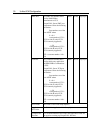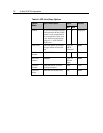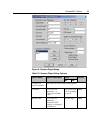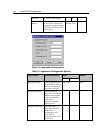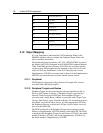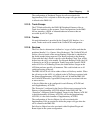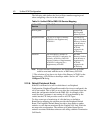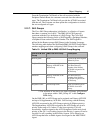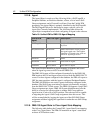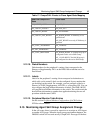
38 Unified ICM Configuration
38
303
Special Claim Follow-up
304
Down Mode
401
Exceptions
402
Determinations
403
Special Projects
501
Child Support Intercept
502
Teletypwriter
503
Interpreting
-1
Not defined. (wrong code used)
2.12. Object Mapping
It is very important to understand the Call Distribution Mode for the
DMS100 switch in order to configure the PeripheralTarget, Route and
Service and their association.
The Peripheral Gateway performs a DV_DN_ASSOCIATION for each of
the Primary ACD DNs configured in the Unified ICM Peripheral Monitor
Table. If the PIM specifies a Primary ACD DN to be associated with the
current session, the host application is informed by the switch of all calls
to that ACD Group. Furthermore, if the ACD Group has one or more
Supplementary ACD-DNs associated with it, then all of the Supplementary
ACD DNs are automatically associated with the current session.
2.12.1. Peripheral
The Peripheral corresponds to the collection of CompuCALL sessions
associated with a BusinessGroupID.
2.12.2. Peripheral Targets and Routes
Peripheral Targets are the means that the software maps/directs calls to
Services, Skill Groups or Agents. A Peripheral Target is specified by a
Network Trunk Group and a DNIS pair. Each Peripheral Target is
associated with a single Route. A Route is associated with a Target Type
(Service, Skill Group, Agent, Translation Route). For accounting purposes,
each Route is associated with a Service. It is this mapping that will allow
the Peripheral Gateway to define the CallType (Service) when a new call
arrives on the DMS-100.
The DNIS configured in the Peripheral Targets must correspond to the
Primary or Supplementary ACD DN defined on the DMS-100. The DNIS
configured in the Peripheral Targets for the Primary ACD DN is the dialed
number of Primary ACD DN, and for the Supplementary ACD DN, it is
the dialed number of Supplementary ACD DN.



